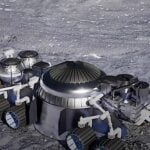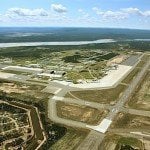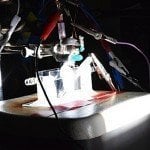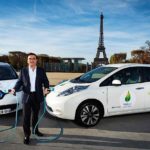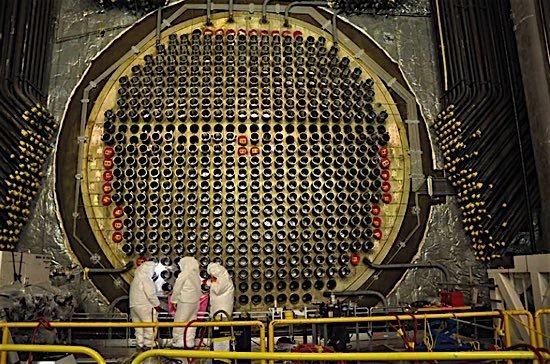
The operator of the world’s largest nuclear power generating facility, Bruce Power, said it applauds North America’s leaders for their commitment to clean energy, including nuclear. The three leaders announced a goal of 50 per cent clean power generation in North America by 2025, using nuclear, renewable, carbon capture and storage, and demand reduction strategies. Initiatives in support of this goal include collaboration on cross-border transmission projects, and joint research in clean technologies, smart grids, energy storage, reduced methane emissions, and advanced heating and cooling. There are currently fifty-five nuclear reactors operating in the six states and two provinces making up the Great Lakes Region. Bruce Nuclear’s eight Candu reactors are the source of 30 per cent of Ontario’s electricity.
The three leaders, Obama, Nieto and Trudeau, also pledged as part of their “historic” goal to promote clean transportation by accelerating development and deployment of clean vehicles to reduce greenhouse gas emissions, and to phase out inefficient fossil fuel subsidies by 2025. There are also wide-ranging provisions to protect wildlife habitat, including the Monarch butterfly, promote bird conservation, protect endangered species, develop better climate and natural disaster warning services, and to help communities diversify their economies.
Strive to achieve a goal for North America of 50 per cent clean power generation by 2025, including renewable, nuclear, and carbon capture and storage technologies, as well as demand reduction through energy efficiency, with actions undertaken by each country individually to achieve this regional goal being in accordance with their own conditions, specific legal frameworks and clean energy national goals.
While 50 per cent clean energy may seem a difficult goal to reach, it should be noted that North America derived 37 per cent of its energy in 2015 from zero-carbon sources, according to the US Nuclear Energy Institute. The head of NEI said that the biggest takeaway from yesterday’s announcement is that the continent needs more zero-carbon nuclear energy “and lots of it.” Marvin Fertel warned that reducing nuclear’s role in the energy mix would make the 50 per cent goal impossible.
However, that reduction is already happening, and is likely to continue in the US. While energy from renewables, mainly wind and solar, is projected to increase by 23 per cent by 2025, the nuclear share is expected to decrease to 18 per cent. California’s last remaining nuclear plant, the Diablo Canyon, is to be closed within nine years, its 9 per cent contribution to the state’s energy grid replaced by zero-emissions energy from wind and solar. A request from Pacific Gas & Electric Co. to extend the Nuclear Regulatory Commission licences for Diablo Canyon for an additional twenty years has been withdrawn. Five new nuclear plants are scheduled to be added to the US grid by 2020.
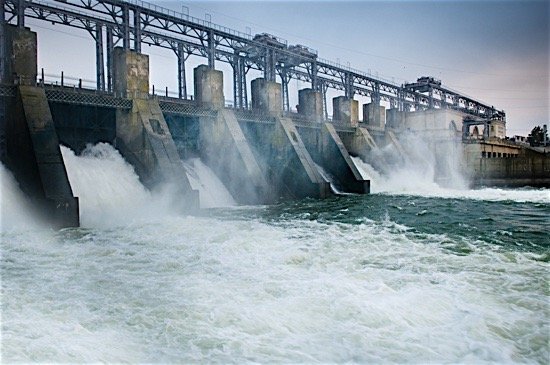
A group called the Union of Concerned Scientists has said that nuclear energy should more properly be called low-carbon, rather than “clean” energy, considering the issues related to its safety, radioactive waste disposal and energy efficiency. According to this group, the US can get 25 per cent of its electricity from renewables, including hydro, by 2025, but with nuclear added, the total rises to 46 per cent. With costs of renewable energy falling rapidly, there is no reason to “shortchange” the opportunity to go further.
At present, the three countries involved draw different amounts of energy from non-emitting sources. The United States drew 32 per cent of its power from non-fossil fuel sources in 2015, according to the US Energy Information Administration, while Mexico reportedly drew 22 per cent. Canada, meanwhile, has the greenest grid of the three, but it produces roughly one-seventh the energy produced in the United States. According to Clean Energy Canada, 80 per cent of Canada’s power last year came from carbon-free sources, 60 per cent of that hydroelectric. However, the commitment to 50 per cent zero-emissions energy is continent-wide, meaning an averaging provision will have to be used.

